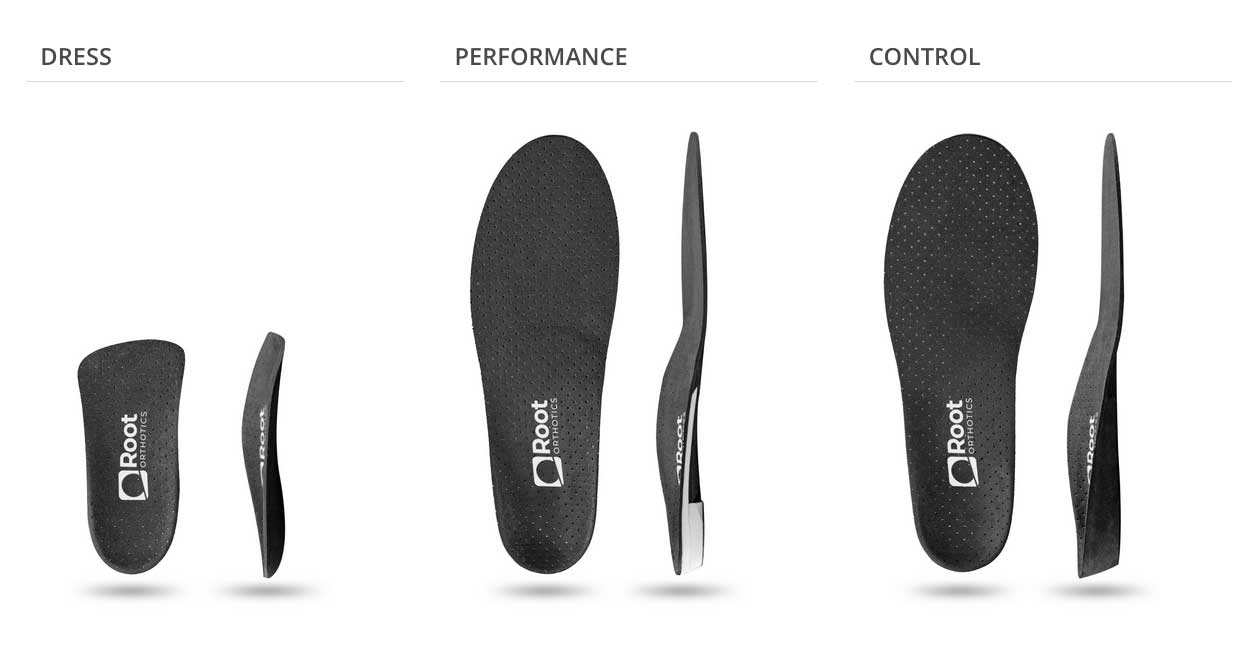The previous two posts in this blog described options available for frame and top cover options in designing orthotic devices within the FootID Pro app or the KevinRoot Medical website. This post will begin to address the “Congruency” option within the FootID Pro app, which is less straightforward.
Once you have entered the patient details and selected the foot model type you will be using to create the orthotic devices, you then select the configurator to actually design the device. Within the configurator you can choose from three basic designs, “Root Performance”, “Root Dress” and “Root Control”.

Root Performance is the most common orthotic utilized and is the intermediate choice between the dress and control options. Once you have made your selection here, the screen will lead you to the “Configurator”, and the first option here is “Congruency”. The first option under congruency is “Model Design Method”, or how the model of the foot is modified before the device is created upon it, and delves into the major foot biomechanics theories developed over the past 50 years. If you choose to skip over this discussion, 95% of the time “Root Modern” will be the best choice for you, and move on to the next step within the configurator
“Root Modern” vs. “Root Traditional” refers to two different approaches to foot orthotic design based on the theories of Dr. Merton Root, often called the father of modern podiatric biomechanics. Here’s a breakdown:
Root Traditional Orthotics
- Basis: Derived strictly from Dr. Root’s original biomechanical theories (1970s).
- Key Assumptions:
- The subtalar joint neutral position is ideal for function.
- The forefoot-to-rearfoot relationship is central to orthotic prescription.
- Posts are often used to correct forefoot or rearfoot deformities.
- Casting position: Non-weightbearing, with the foot held in subtalar joint neutral.
- Goal: To realign the foot to the theoretical “ideal” position for improved function.
Root Modern Orthotics
- Basis: Still influenced by Root’s principles but updated with more modern research and clinical experience.
- Key Differences:
- Recognizes that normal variation exists, and not all feet need to be corrected to a strict ideal.
- Places more emphasis on comfort, function, and tissue stress reduction rather than ideal alignment.
- Often uses 3D scanning or digital techniques rather than plaster casting.
- Goal: To optimize function and reduce pain, even if alignment isn’t “perfect.”
The Root Theory is basically a study of the forces that create motion during gait kinetics. The subsequent theories such as tissue stress (Kirby), sagittal plane (Dananberg), and MASS or Maximum Arch Subtalar Supination (Glaser) are kinematics based, focused more on the motions and pathology created by abnormal forces. To reiterate, the default option here is “Root Modern”, which incorporates both kinetics and kinematics into custom foot orthotic device design.
Another option under “Model Design Method” is “No correction-As Captured”. This option would be appropriate in cases where the goal is to distribute pressure evenly across the entire sole of the foot without manipulating movement. An example might be a severely arthritic, traumatized or sensory or motor deficient foot. “Library Casting” is for cases where a pre-existing model exists that the practitioner chooses in this particular case. “Blake Inversion” refers to an orthotic device that is made over a tilted positive cast to further limit severe pronatory forces, I would refer you to the many fine articles written by Dr Blake for further information. Finally, “Mass Casting” refers to an orthotic device with an accentuated high medial arch in order to assure the foot maintain a supinated posture, I would again refer you to the literature for more information on this technique.
The next blog post will be a continuation of scrolling down the model design method options of the congruency column within the FootID Pro configurator.






